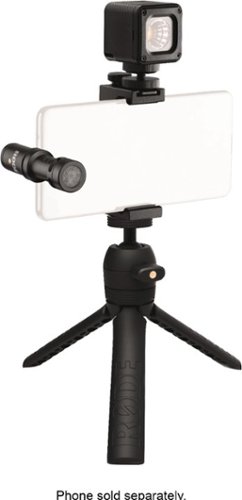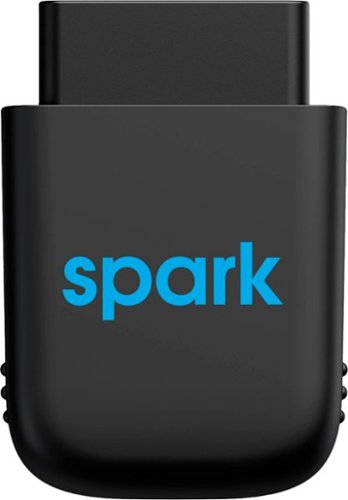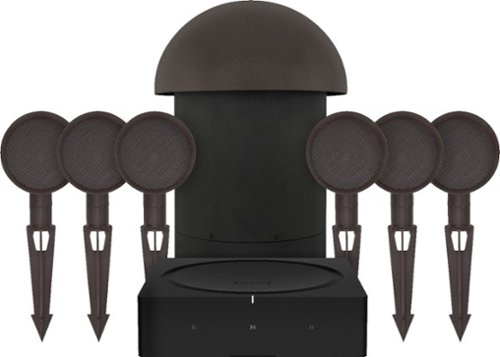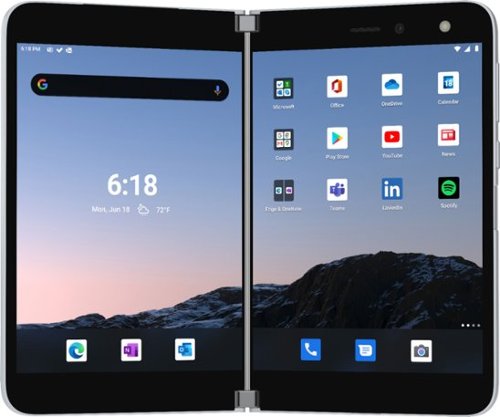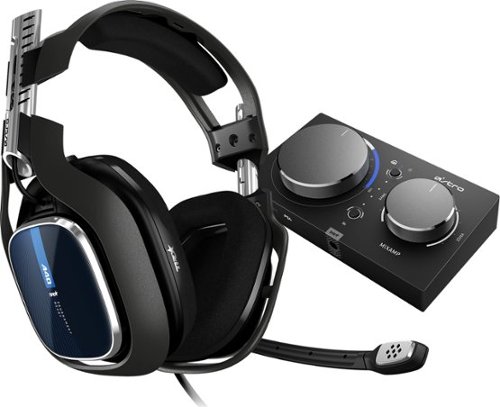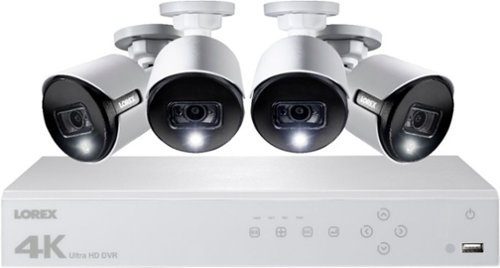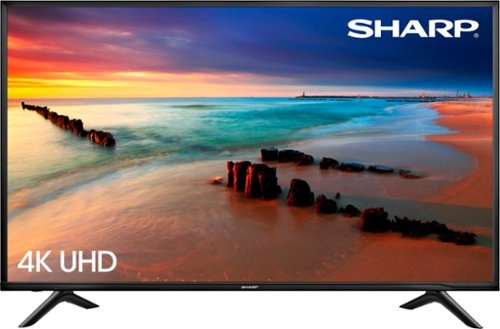Panther68's stats
- Review count118
- Helpfulness votes986
- First reviewSeptember 6, 2012
- Last reviewSeptember 23, 2022
- Featured reviews0
- Average rating4.1
- Review comment count2
- Helpfulness votes1
- First review commentSeptember 30, 2014
- Last review commentJuly 8, 2017
- Featured review comments0
Questions
- Question count0
- Helpfulness votes0
- First questionNone
- Last questionNone
- Featured questions0
- Answer count12
- Helpfulness votes2
- First answerJune 30, 2017
- Last answerJune 27, 2021
- Featured answers0
- Best answers0
Deliver dynamic reports, lectures and proposals with this Epson business projector. Its XGA resolution and 3,300 lumens of color and white brightness provide optimal clarity for text and graph presentations, and it has HDMI, USB and RCA ports to support various media sources. This Epson business projector produces an image size of up to 300 inches to suit large venues.
Customer Rating

5
A Great, Compact, Bright Projector
on September 29, 2017
Posted by: Panther68
from SF Bay Area
First off, I feel the need to disclose the fact that I really know nothing about projectors, especially business-class projectors. I know TVs, I know cell phones, I know home theater receivers, I know DVD/Blu-ray players, and I really know computers…but I know nothing about projectors. Obviously, this won’t be a professional-quality review. Being the Tech Lead for my church, and knowing that, as of this weekend, we’d be in a new location, and losing the projector we’ve been using for the past 6 years, this gave the perfect opportunity to put the VS350 through its paces…especially considering the new projector the church is planning on getting us won’t hit the market for another 1-2 months. Once the new projector arrives, the VS350 will be an excellent backup, as you will see.
UNBOXING & INITIAL IMPRESSIONS:
Not sure what I was expecting., except…maybe…”more”. The box (a plain brown box, with ‘Epson’, the model number, and a few additional/minor pieces of info printed on the box) contained the projector, power cord, remote, batteries (for remote), a 15-pin VGA cable, a plastic bracket (to mount the (optional) Wi-Fi USB adapter), and the usual instructions in several languages. No color graphics printed on the box…just a plain brown box. The projector was in a clear plastic bag, as was every item in the box (except the batteries, which were shrink-wrapped together.
Not sure what I was expecting., except…maybe…”more”. The box (a plain brown box, with ‘Epson’, the model number, and a few additional/minor pieces of info printed on the box) contained the projector, power cord, remote, batteries (for remote), a 15-pin VGA cable, a plastic bracket (to mount the (optional) Wi-Fi USB adapter), and the usual instructions in several languages. No color graphics printed on the box…just a plain brown box. The projector was in a clear plastic bag, as was every item in the box (except the batteries, which were shrink-wrapped together.
SETUP:
The Epson VS350 is extremely simple to set up – simply place it where you want (table, bookshelf, etc), plug the power cord in, connect the video cable (more on that in a minute) between projector & projection source, open the lens cover, turn on projector, and boot up the projection source. It doesn’t get any simpler. As for the video cable, that’s where you have some options. You can connect it via the included 15-pin VGA cable, but you also have other options, such as HDMI, USB Type-B (which requires installing drivers on your PC/Mac) & composite cables. The HDMI & USB options transmit both video & audio, whereas the VGA & composite are video only (there are, however, red & white composite audio jacks). Additionally, the USB port also allows you to use the projector’s remote as a mouse. If purchasing the Wi-Fi USB adapter, that plugs into the USB Type-A port. Lastly, you have the option of placing the projector in front of, or behind, the screen, as well as upright (tabletop), or upside-down (ceiling mount).
The Epson VS350 is extremely simple to set up – simply place it where you want (table, bookshelf, etc), plug the power cord in, connect the video cable (more on that in a minute) between projector & projection source, open the lens cover, turn on projector, and boot up the projection source. It doesn’t get any simpler. As for the video cable, that’s where you have some options. You can connect it via the included 15-pin VGA cable, but you also have other options, such as HDMI, USB Type-B (which requires installing drivers on your PC/Mac) & composite cables. The HDMI & USB options transmit both video & audio, whereas the VGA & composite are video only (there are, however, red & white composite audio jacks). Additionally, the USB port also allows you to use the projector’s remote as a mouse. If purchasing the Wi-Fi USB adapter, that plugs into the USB Type-A port. Lastly, you have the option of placing the projector in front of, or behind, the screen, as well as upright (tabletop), or upside-down (ceiling mount).
SETTINGS:
The settings menu is fairly straight-forward, divided into Image, Signal, Settings, Extended, Network & ECO categories (there’s also Info & Reset, but I’m ignoring those for this review). Being an XGA projector, the output resolution is 1024x768 (ie. 4:3 ratio), although the projector does have a 16:9 output option. Adjusting image size, focus, & “horizontal keystone” are all easily accomplished via two rotating rings, and a slider, located just behind the lens. Additional functions, such as volume, source, menu, as well as other basic functions, are controlled via a panel on top of the projector. More advanced functions are accessed within the previously-mentioned menu system, as well as via the remote, all of which are fairly simple.
The settings menu is fairly straight-forward, divided into Image, Signal, Settings, Extended, Network & ECO categories (there’s also Info & Reset, but I’m ignoring those for this review). Being an XGA projector, the output resolution is 1024x768 (ie. 4:3 ratio), although the projector does have a 16:9 output option. Adjusting image size, focus, & “horizontal keystone” are all easily accomplished via two rotating rings, and a slider, located just behind the lens. Additional functions, such as volume, source, menu, as well as other basic functions, are controlled via a panel on top of the projector. More advanced functions are accessed within the previously-mentioned menu system, as well as via the remote, all of which are fairly simple.
IMAGE QUALITY:
I was impressed by the brightness. I’m somewhat accustomed to the white brightness of home theater projectors, but their colors tend to be somewhat muted. I realize this is by design, as viewing is done in darkened rooms. The VS350 is not only bright on the whiteness scale, but also on the color scale, which makes sense considering its business-class. Images were sharp & bright. The fact that the images were so bright almost made me forget the projector doesn’t have a higher resolution. Considering what this projector will be used for, that’s perfectly alright.
I was impressed by the brightness. I’m somewhat accustomed to the white brightness of home theater projectors, but their colors tend to be somewhat muted. I realize this is by design, as viewing is done in darkened rooms. The VS350 is not only bright on the whiteness scale, but also on the color scale, which makes sense considering its business-class. Images were sharp & bright. The fact that the images were so bright almost made me forget the projector doesn’t have a higher resolution. Considering what this projector will be used for, that’s perfectly alright.
ADDITIONAL THOUGHTS:
As our church campus moved, from an elementary school cafeteria/auditorium, to a hotel meeting room, our ability to control lighting was greatly lessened. This is what makes having a business-class projector perfect. With the previous location, we had very good lighting control, thus a home theater-class projector was perfect. However, in the hotel meeting room, the lights are either on, off, or “mid-level” (which isn’t dark enough for a home theater-class projector. The brightness level of the Epson VS350 allowed us to perfectly see all the slides, as well as the videos, even with the lights turned completely on.
As our church campus moved, from an elementary school cafeteria/auditorium, to a hotel meeting room, our ability to control lighting was greatly lessened. This is what makes having a business-class projector perfect. With the previous location, we had very good lighting control, thus a home theater-class projector was perfect. However, in the hotel meeting room, the lights are either on, off, or “mid-level” (which isn’t dark enough for a home theater-class projector. The brightness level of the Epson VS350 allowed us to perfectly see all the slides, as well as the videos, even with the lights turned completely on.
FINAL VERDICT:
Considering what the Epson VS350 is designed for, I think it to be an excellent projector…the price is good, the image quality is extremely good (for a non-HD projector), and the brightness is outstanding. If you’re looking for a fairly inexpensive, high-quality, very-bright business-class projector, this projector will meet your wants, needs, and budget. Again, I don’t know much (or anything, for that matter) about projectors…especially business-class projectors…but, as far as I’m concerned, the Epson VS350 would be an excellent choice. For years, I’ve known Epson to be an outstanding manufacturer of printers…now I also know they’re great with projectors.
Considering what the Epson VS350 is designed for, I think it to be an excellent projector…the price is good, the image quality is extremely good (for a non-HD projector), and the brightness is outstanding. If you’re looking for a fairly inexpensive, high-quality, very-bright business-class projector, this projector will meet your wants, needs, and budget. Again, I don’t know much (or anything, for that matter) about projectors…especially business-class projectors…but, as far as I’m concerned, the Epson VS350 would be an excellent choice. For years, I’ve known Epson to be an outstanding manufacturer of printers…now I also know they’re great with projectors.
Disclaimer: This product was provided free, or at reduced cost, for the purpose of reviewing the product. Nevertheless, the above review, be it positive, negative, or anywhere in-between, is a 100% honest review, and the price paid played absolutely no part in my review.
My Best Buy number: 0041679708
Mobile Submission: False
I would recommend this to a friend!
Connect every device in your home with this D-Link Wi-Fi router, and experience super-fast data transfers without the lag. Ending system shortcomings that happen with overloads, this router features four antennas to cover every corner of your home. Two USB ports on this D-Link Wi-Fi router let you connect a printer or extra hard drive storage.
Customer Rating

4
A Mixed Bag…Room for Improvement
on September 27, 2017
Posted by: Panther68
from SF Bay Area
UNBOXING, AND INITIAL IMPRESSIONS:
Nothing special about the packaging…not a “bad” thing, as a router is a router. Back of the box contains the usual manufacturer’s jargon, promoting features/functions D-Link wants buyers to know about – dual-core CPU, AC SmartBeam, 160MHz support, Connected Home, etc. Some have actual meaning, others are typical marketing. One packaging detail I liked was the extra layer of protection. Most manufacturers place routers inside a bag OR they cover them with a plastic “static cling” cover….for the DIR-882, D-Link did BOTH.
Nothing special about the packaging…not a “bad” thing, as a router is a router. Back of the box contains the usual manufacturer’s jargon, promoting features/functions D-Link wants buyers to know about – dual-core CPU, AC SmartBeam, 160MHz support, Connected Home, etc. Some have actual meaning, others are typical marketing. One packaging detail I liked was the extra layer of protection. Most manufacturers place routers inside a bag OR they cover them with a plastic “static cling” cover….for the DIR-882, D-Link did BOTH.
SETUP:
Initial setup is very simple. As this was the first time the router was being configured, I was greeted with a “Welcome” pop-up, which walked me through the simple 3-step process. D-Link’s browser-based UI is very simple, yet informative. Unfortunately, it is also unstable…I had to log back in multiple times. While initial setup is simple, utilizing some of the advanced features/functions can prove frustrating in some regards, and impossible in others.
Initial setup is very simple. As this was the first time the router was being configured, I was greeted with a “Welcome” pop-up, which walked me through the simple 3-step process. D-Link’s browser-based UI is very simple, yet informative. Unfortunately, it is also unstable…I had to log back in multiple times. While initial setup is simple, utilizing some of the advanced features/functions can prove frustrating in some regards, and impossible in others.
One example of these problems is the QoS (Quality of Service) Engine, which prioritizes at the device level. The process is quick & simple, but it ONLY prioritizes per-device level, NOT per app. If you have a high-end, game-only computer you want at the “Highest” level, a server & PS4 at the “High” level, and all other devices at the “Medium” level, this is great. However, if you have…say…two high-end computers, both used for a variety of things (including gaming), a PS4 & Xbox One, & a 4K UHDTV, “gaming priority” (as can be done on other gaming-focused routers) is not possible. This could be considered contradictory to D-Link’s claim, as indicated on the box. Another problem is blocking access (found on the Management page). You can assess this function, but it never saves. I attempted to create a block (no kids, so was attempting to temporarily “block” my wife’s laptop), but when I attempted to save, I found myself bounced back in the menu.
On the plus side, there’s a website filter (allowing you to block URLs), as well as a built-in VPN (Quick VPN) function. Additionally, D-Link offers the QRS Mobile app. With my Asus router, I have a mobile app, which allows access to the router’s configuration information…but it does NOT allow me to configure/maintain the router. D-Link’s QRS Mobile app allows configuration ability. The latest wave of “whole home Wi-Fi systems” are completely configured/maintained via mobile apps. It’s extremely nice to see a manufacturer allowing web-based AND mobile app.
SIGNAL STRENGTH TESTS:
Short & sweet, the 5GHz band has P-O-W-E-R. The 5GHz band on the D-Link router is much stronger than my Asus router. Of course, the Asus router has only three antennas, whereas the D-Link has four. Moving to the 2.4GHz band, there was sadness, as the 2.4GHz signal strength was no better than my Asus router.
Short & sweet, the 5GHz band has P-O-W-E-R. The 5GHz band on the D-Link router is much stronger than my Asus router. Of course, the Asus router has only three antennas, whereas the D-Link has four. Moving to the 2.4GHz band, there was sadness, as the 2.4GHz signal strength was no better than my Asus router.
DATA TRANSFER TESTS:
This is where things get “interesting”. Tests were done from two specific points. The first tests were done in the living room, where the router is located, from the opposite corner. That is where my desktop, as well as my wife’s laptop, are located. The second round of tests were done from the master bedroom, where we occasionally use our Android tablets, and where I occasionally use my Microsoft Surface. Both locations proved to be considerably faster than my Asus router on the 5GHz band. When I say “considerably faster”, I’m talking approximately 20% faster in the living room, and approximately 15% faster in the master bedroom. Not only that, but, in comparing the data speeds against each other (living room vs bedroom), they were virtually identical. Put another way, D-Link’s beamforming technology is extremely successful, as data transfer speeds remained fairly consistent throughout the entire house (this I tested by running fasTest Deep from my Samsung Galaxy Note 8, taking readings at numerous points throughout the house).
This is where things get “interesting”. Tests were done from two specific points. The first tests were done in the living room, where the router is located, from the opposite corner. That is where my desktop, as well as my wife’s laptop, are located. The second round of tests were done from the master bedroom, where we occasionally use our Android tablets, and where I occasionally use my Microsoft Surface. Both locations proved to be considerably faster than my Asus router on the 5GHz band. When I say “considerably faster”, I’m talking approximately 20% faster in the living room, and approximately 15% faster in the master bedroom. Not only that, but, in comparing the data speeds against each other (living room vs bedroom), they were virtually identical. Put another way, D-Link’s beamforming technology is extremely successful, as data transfer speeds remained fairly consistent throughout the entire house (this I tested by running fasTest Deep from my Samsung Galaxy Note 8, taking readings at numerous points throughout the house).
As we say in science, “every action has an equal, and opposite, reaction”…and this holds true where the 2.4GHz band is concerned. Just as the 5GHz band was 15-20% faster than my Asus RT-AC68P, the opposite holds true on the 2.4GHz band, as the D-Link DIR-882 was approximately 15% slower. While more & more newer devices have 5GHz connectability, there are still plenty of devices (such as my Logitech Harmony Hub) that can only connect via 2.4GHz. For these devices, this router would actually make the connection worse, and data transmitted between those devices & the DIR-882 would be slower.
ADDITIONAL INFORMATION:
I didn’t like the SmartConnect function, as it combines the 2.4GHz & 5GHz bands together. This is a standard practice on most “whole home Wi-Fi systems”, but on standard/traditional routers…especially one with fairly common advanced features/functions…this is not appreciated. While basic users might appreciate SmartConnect, this could be a problem for more advanced users.
I didn’t like the SmartConnect function, as it combines the 2.4GHz & 5GHz bands together. This is a standard practice on most “whole home Wi-Fi systems”, but on standard/traditional routers…especially one with fairly common advanced features/functions…this is not appreciated. While basic users might appreciate SmartConnect, this could be a problem for more advanced users.
THE GOOD: Ease of setting up
Ease of basic configuring
Beam forming
MU-MIMO
Great 5GHz performance
Outstanding 5GHz coverage area
Ease of basic configuring
Beam forming
MU-MIMO
Great 5GHz performance
Outstanding 5GHz coverage area
THE BAD: Quality of Service is extremely basic
Bad 2.4GHz performance
Mediocre 2.4GHz coverage area
Bad 2.4GHz performance
Mediocre 2.4GHz coverage area
THE UGLY: User interface crashes
Scheduling function won’t save
Scheduling function won’t save
FINAL THOUGHTS:
FINAL VERDICT:
If you only use devices connecting wirelessly via 5GHz, then this is an excellent choice. It’s equivalent to a few other high-end routers, but costing close to half the price. The ability to configure, as well as maintain, the router by browser interface AND/OR mobile app is fantastic (other devices, by D-Link & other manufacturers) “limit” you to one, or the other (maybe, in the near future, this is something all manufacturers will incorporate into all their routers). Unfortunately, the current UI is somewhat unstable. Additionally, for those with children, and wanting to limit/block their ability to access during certain time periods, the “brokenness” of the scheduling function is another serious problem. Hopefully these, and other, problems are something D-Link will fix in an upcoming firmware update (the v1.01B02 firmware, released 9/5/17, did not address them). Lastly…and unfortunately…as great as the DIR-882’s 5GHz performance is, its 2.4GHz performance leaves much to be desired. A newer, higher-end router should excel in both bands. The fact that performance is greatly improved in one band, but worsened in the other, says there are problems, be it with the firmware, hardware, or both.
If you only use devices connecting wirelessly via 5GHz, then this is an excellent choice. It’s equivalent to a few other high-end routers, but costing close to half the price. The ability to configure, as well as maintain, the router by browser interface AND/OR mobile app is fantastic (other devices, by D-Link & other manufacturers) “limit” you to one, or the other (maybe, in the near future, this is something all manufacturers will incorporate into all their routers). Unfortunately, the current UI is somewhat unstable. Additionally, for those with children, and wanting to limit/block their ability to access during certain time periods, the “brokenness” of the scheduling function is another serious problem. Hopefully these, and other, problems are something D-Link will fix in an upcoming firmware update (the v1.01B02 firmware, released 9/5/17, did not address them). Lastly…and unfortunately…as great as the DIR-882’s 5GHz performance is, its 2.4GHz performance leaves much to be desired. A newer, higher-end router should excel in both bands. The fact that performance is greatly improved in one band, but worsened in the other, says there are problems, be it with the firmware, hardware, or both.
So, would I recommend the D-Link EXO AC2600 MU-MIMO router? That depends. If you have any considerable number of devices connecting only via 2.4GHz, then my answer is, most definitely, “NO”. when a 3-year old router, using an older Wi-Fi chipset outperforms a newer-higher-end router, one needs to wonder ‘why’. Additionally, the UI & scheduling problems add to my inability to recommend it. However, if your devices are almost all connecting via the 5GHz band, then, looking at things from a “best bang for the buck” perspective, the answer is “YES”. To get this kind of performance from other 5GHz routers, you’re going to pay close to twice the price. I realize there’s still the UI & scheduling problems, but, as I’ve already mentioned, I’m (fairly) certain D-Link will fix them in an upcoming firmware release. Considering their first firmware update was released before the router hit store shelves, I’m confident that, within the next 1-3 firmware updates, these problems should be completely resolved.
In closing, I’d prefer the ability to issue half-star ratings, as I’d give the D-Link DIR-883 3.5 stars…but, since half-stars aren’t allowed, that is why the 4-star rating was given. There are many things to really like about this router, but there are, at least at this point in time, to many problems. For the typical “basic” user, the DIR-882 will give them several advanced features/functions not found in entry-level routers, and they are provided these features/functions in a simple-to-use interface. As great as that is, the UI crashing on a somewhat consistent basis is going to irritate some people. Likewise, the outstanding 5GHz performance is somewhat negated by the mediocre 2.4GHz performance. Then there’s the scheduling “problem”, which won’t matter to those without such a need…but, for those who have this need, the (current) inability to use the feature is not going to be appreciated. Personally, I intend to continue using my Asus router…but the D-Link DIR-882 will be its “first string” backup.
Disclaimer: This product was provided free, or at reduced cost, for the purpose of reviewing the product. Nevertheless, the above review, be it positive, negative, or somewhere in-between, is a 100% honest review, and the price paid played absolutely no part in my review.
My Best Buy number: 0041679708
Mobile Submission: False
I would recommend this to a friend!
Pull out this Shark DuoClean Slim upright vacuum for jobs large and small. The included dusting brush and crevice and upholstery tools make it a powerhouse for cleaning furniture and out-of-the-way corners. This Shark DuoClean Slim upright vacuum is lightweight, making it easy to transport up flights of stairs on cleaning day.
Customer Rating

4
Vacuum with excellent suction power
on September 22, 2017
Posted by: Panther68
from SF Bay Area
The initial unboxing of the Shark DuoClean Slim (Model #NV201) displayed an innovative look and style. The vacuum comes with four attachments, each designed to fulfil a specific task. An interesting, yet extremely helpful, feature is the detachable hose which can be used with any of the attachments. Dealing with standard vacuums, one problem people typically encounter is the suction ability (or lack thereof) when picking up certain types of things off the floor. While the Shark doesn’t have the suction power of, say, a Dyson vacuum, it comes far closer than any other vacuum I’ve used…and for a considerably lower price. Another nice feature is its ability to pivot, similar to the Dyson Ball vacuums. This can be especially handy when one has to deal with large and/or heavy objects (couches, coffee tables, etc) that are not easily movable.
I starting out by testing the “standard” vacuum capabilities, which worked without any problems. Next, I attempted to vacuum up some pet hair, which proved an easy task for the DuoClean Slim. However, when it came to clumped hair, the vacuuming became a bit more challenging, as it had some problems picking up the clumped hair. Next, I tried the attachment with the finer hair, using it to vacuum Rice Krispies (kids will spill things). I could be wrong, but I’m thinking that, due to the fineness of soft bristles, that may have been the cause in vacuuming the Rice Krispies. This is NOT to say that the DuoClean is a bad vacuum…on the contrary, it is extremely good. When vacuuming what 99% of people will be using it for – dust & dirt – it proved to be one of the best vacuums I’ve had the pleasure (if one could consider vacuuming a “pleasure”) of using…one pass was all it took, as all dust & dirt was gone from the floor. Control and maneuverability, likewise, is excellent, primarily due to its pivoting.
Looking at each attachment, individually, the dusting brush removed dust and buildup with ease, especially on cloth/canvas furniture. The wide upholstery tool made it easy to cleaning our couch. The crevice tool (used with the detachable hose) made it easy for cleaning behind the wall-hung flat screen TV, as well as behind the entertainment center, and around the refrigerator. Finally, the multi angle tool was perfect for vacuuming the top of cabinets, picture frames, shelves, etc.
Looking at each attachment, individually, the dusting brush removed dust and buildup with ease, especially on cloth/canvas furniture. The wide upholstery tool made it easy to cleaning our couch. The crevice tool (used with the detachable hose) made it easy for cleaning behind the wall-hung flat screen TV, as well as behind the entertainment center, and around the refrigerator. Finally, the multi angle tool was perfect for vacuuming the top of cabinets, picture frames, shelves, etc.
FINAL VERDICT:
Overall, the Shark DuoClean Slim is a great product. I’d give it an 8.5 out of 10, recommending it for household use, as well as an office cleaning services. When it comes to vacuuming pet hair, while not as great as the Dyson Animal, it does come extremely close…and, need I say again, for close to half the price. The only problems encountered were when vacuuming clumped hair and cereal using standard ground level feature. Other than those two fairly minor “negatives”, I’d still consider the Shark DuoClean Slim as a brilliant product. If you’ve been looking for a new vacuum, the Shark DuoClean Slim should be on your “short list”. If you have pets, and have to vacuum a considerable amount of hair, you (realistically) have only two choices – the Shark DuoClean Slim, or the Dyson Animal. Both are excellent choices (I have a Dyson Animal, so I do know)…but the Shark will cost you approximately half the price.
Overall, the Shark DuoClean Slim is a great product. I’d give it an 8.5 out of 10, recommending it for household use, as well as an office cleaning services. When it comes to vacuuming pet hair, while not as great as the Dyson Animal, it does come extremely close…and, need I say again, for close to half the price. The only problems encountered were when vacuuming clumped hair and cereal using standard ground level feature. Other than those two fairly minor “negatives”, I’d still consider the Shark DuoClean Slim as a brilliant product. If you’ve been looking for a new vacuum, the Shark DuoClean Slim should be on your “short list”. If you have pets, and have to vacuum a considerable amount of hair, you (realistically) have only two choices – the Shark DuoClean Slim, or the Dyson Animal. Both are excellent choices (I have a Dyson Animal, so I do know)…but the Shark will cost you approximately half the price.
Disclaimer: This product was provided free, or at reduced cost, for the purpose of reviewing the product. Nevertheless, the above review, be it positive, negative, or anywhere in-between, is a 100% honest review, and the price paid played absolutely no part in my review.
My Best Buy number: 0041679708
Mobile Submission: False
I would recommend this to a friend!
Discover Vitamix Explorian E310. Its 2-HP motor and stainless-steel blades ensures longevity and consistent results. Take control of recipes with Variable Speed Control and Pulse Function. More than a smoothie maker, you can make hot soup in minutes. Explorian E310 is an accessible choice for home chefs looking to upgrade their kitchen appliances.
Customer Rating

5
Vitamix…the better (best?) “blender”
on August 28, 2017
Posted by: Panther68
from SF Bay Area
As an owner of an older Vitamix, I already knew the Explorian Series E310 would be an excellent product. While it doesn’t have as many features/functions as my 6300 (which sells for twice the price), it does offer everything you need in a basic Vitamix …and MORE. To call this, or any other Vitamix machine a “blender” is a serious understatement…you can not only blend, but can make everything from frozen desserts to hot soups. Now that I have two Vitamix machines, I can simultaneously make soup for dinner, as well as dessert.
Before buying my first Vitamix, I did a lot (again, an understatement) of research, primarily comparing Vitamix, Blendtec, and Ninja. After reading a few reviews & comparisons, the Ninja was quickly eliminated from contention. It took a lot more reviews & comparisons to finally realize that Vitamix was just a better product. Getting back to the E310, the Explorian Series is a new “entry-level” Vitamix series, to be positioned below their Ascent & Legacy Series, but above the Personal Series. If you’re looking for a “power blender”, I can tell you, right off the bat, remove Ninja from your list – the only real contenders are Vitamix & Blentec. Now, if you’re trying to decide between these two brands, you can do all the research you want, and, chances are, you’ll come to the same conclusion as the majority of others doing the same thing – Vitamix is a better product, Vitamix products offer better warranties, and Vitamix products last longer.
Would I recommend the E310? In short, if you want the best power-blender brand, but want to keep costs to a minimum, the Vitamix Explorian E310 is the answer.
Disclaimer: This product was provided free, or at reduced cost, for the purpose of reviewing the product. Nevertheless, the above review, be it positive, negative, or somewhere in-between, is a 100% honest review, and the price paid played absolutely no part in my review.
My Best Buy number: 0041679708
Mobile Submission: False
I would recommend this to a friend!
Install this Logitech Circle 2 security system in just minutes, and keep your family and valuables protected with full HD video. Advanced Motion Filtering keeps track of noticeable changes, recording them so you see only what is significant. The ultra-wide 180-degree lens lets you see more of your surroundings with this Logitech Circle 2 security system.
Customer Rating

3
Great Improvement…But Still Needs Work
on August 4, 2017
Posted by: Panther68
from SF Bay Area
At first glance, Logitech’s new Circle 2 seems like a huge improvement over the original Circle. First, the Circle 2 is smaller. Second, whereas the original was indoor-only, the Circle 2 is indoor/outdoor. The field of view has increased from 135 degrees, to 180 degrees (this is both good & bad). Lastly, whereas the original’s battery typically lasted 3 hours (12 hours in “power save” mode), the wireless version of the Circle 2 claims “up to 3 months”. So far, the Circle 2 appears to be a huge improvement over the original…right? Well, read on.
SIDE NOTE: Regarding the wired version (such as I have), there is an optional battery pack, which (essentially) turns the wired model into the wireless model. The difference – purchase the wired version, plus the rechargeable battery, you end up spending $30 more than just purchasing the wireless version, but still end up with the same thing.
SIDE NOTE: Regarding the wired version (such as I have), there is an optional battery pack, which (essentially) turns the wired model into the wireless model. The difference – purchase the wired version, plus the rechargeable battery, you end up spending $30 more than just purchasing the wireless version, but still end up with the same thing.
Let’s start with the “good” things. Setting up the Circle 2 is extremely simple, and only takes a few minutes. Installing the Android/iOS apps, and connecting to the Circle 2 is an equally simple process. The clarity of the night vision is, to be completely honest, fantastic. Last night, with the lights out, I was playing a few games of Backgammon before going to sleep (part of my usual nighttime “routine” which helps me become sleepy), and I viewed the recorded video the following day…everything was crystal-clear. I’ve tested the video & audio streaming quality while connected to the Wi-Fi (from another room), as well as through a cellular data connection. While connected to Wi-Fi, video up to the 1080p maximum is beautiful, albeit “warped” (remember the camera has a 180degree field of view). Connecting via cellular data wasn’t as spectacular, but only due to data transmission – 720p & 360p are excellent, but 1080p experienced occasional “freezes”. Lastly, there’s the optional accessories, including the aforementioned rechargeable battery, an outdoor mount, and a window mount, with (I’m assuming) more accessories on their way.
Now the “bad”…starting with those accessories. The battery pack adds $49, the window mount another $39, and the outdoor mount another $29. If you know your math, you can see how the overall costs quickly add up. Let’s say you want to mount one camera above your garage door, one mounted on the window facing your front door, and a third mounted inside the kitchen facing the back door…just purchasing three cameras (2 wireless, & 1 wired), an outdoor mount, and a window mount will set you back $645 (before taxes). For around that same price, you can purchase an 8-channel/4-camera DVR-based system, with the option to add up to an additional four cameras.
Next, there’s the audio quality, which is far too low to make it truly useable. On the receiving end, using my Bluetooth headset at full volume, while the audio quality was very good, I could barely hear anything my wife was saying. Moving to the camera’s side (Logitech touts the ability to remotely speak to the person/people being viewed, such as a person at the front door, when connected to the outdoor mount), the audio quality and volume coming from the camera’s speaker is downright horrible. As in testing the video quality (as viewed from my Android-based cell phone), we tested the audio in two sessions – one via Wi-Fi, the other via cellular data, both of which provided almost identical results (which clearly indicates the “problem” is with the Circle 2, and not “cellular data limitations”). On all three, with video resolution set at 1080p, audio was of reasonable volume, but quality was bad enough that my wife could barely understand what I was saying. Additionally, there was a lot of “static” (her words, not mine). Lowering the video quality to 720p increased the audio quality, and reduced the “static”, so that my wife could better understand me…but not by much. Further lowering the video quality to 360p produced no noticeable difference (compared to the 720p setting). When…for example…viewing, and talking with, a person at your front door, what good is it if you can barely hear what the person is saying, and the person on the other end can’t understand what you’re saying?
Finally, there’s Logitech’s “Circle Safe” service. It’s fantastic that they provide 256-bit AES dual-layer encryption. Unfortunately, they’re charging $10/mo (or $99/yr) PER CAMERA. If you have three cameras, that’s $30/mo (which equates to $360 annually) on the monthly plan, or $297/yr on the annual plan. Of course, signing up for Circle Safe isn’t required…but if you don’t sign up, you only have access to recorded video for 7 days…plus, at least as far as I’m aware, you don’t have the ability to download them, so, once 7 days has passed, you’ve lost that day’s video.
FINAL VERDICT: I truly wanted to like the Circle 2, as I’ve greatly enjoyed Logitech products for many years. I’ve used (and currently use) Logitech keyboards, mice, Harmony remotes, speakers, gamepads, etc…and I’ve never disliked any of them. Unfortunately, the Circle 2 is a “no-go” for me. While the viewed video quality (connected via Wi-Fi & cellular data) is excellent, the extremely poor audio quality & volume ruins any reason for considering a Circle 2. There are other single-camera systems, as well as multi-camera systems (2-4 cameras), that operate similarly to the Circle 2, albeit for a lower overall cost, and with better results. Moving up, there are numerous multi-camera DVR-based systems that are of similar (or better) quality for approximately the same price, or slightly more. Because of this, I cannot recommend the Logitech Circle 2…no matter how much I wanted to, prior to receiving it.
That being said…and here’s where I see the potential going…if Logitech were to take the technology behind the Circle 2 system, and package a multi-camera system, along with a DVR-based recording box (also refered to as “NVR”), then Logitech would have a huge winner. Imagine a packaging that included an Ethernet-connected DVR/NVR & 4 cameras (2 wireless, 2 wired), along with an outdoor mount & window mount…Logitech would not only have something to compete against the typical “security camera system”, but they’d have something better than other consumer-grade systems. Unfortunately, this isn’t that system.
Disclaimer: This product was provided free, or at reduced cost, for the purpose of reviewing the product. Nevertheless, the above review, be it positive, negative, or anywhere in-between, is a 100% honest review, and the price paid played absolutely no part in my review.
My Best Buy number: 0041679708
Mobile Submission: False
No, I would not recommend this to a friend.
Immerse yourself in music or movies with this LG TONE Studio wearable speaker. It has four drivers to let you experience three-dimensional surround sound and feel low-frequency vibrations from the bass through your body. This LG TONE Studio wearable speaker is Bluetooth compatible for easy connection to your smart devices.
Customer Rating

4
Great in many ways…but could be better
on July 19, 2017
Posted by: Panther68
from SF Bay Area
INITIAL IMPRESSION:
The packaging is well-designed, and easy to open...unfortunately, it’s too easy, as you’ll find out. The “inner box” was equally well-designed, giving a suedo-impression of quality packaging. The only thing I didn’t care for was how the packaging was sealed, as someone could easily open the “seal”, remove the contents, and reseal the packaging, leaving an empty box for whoever purchased it. Most company’s seal their packaging with an adhesive that sticks to the cardboard well enough so as to tear it, indicating it has been previously opened. LG, on the other hand, used an adhesive that’s simple enough to remove & reseal, giving the impression the package is “factory-sealed”. BAD move, LG.
The packaging is well-designed, and easy to open...unfortunately, it’s too easy, as you’ll find out. The “inner box” was equally well-designed, giving a suedo-impression of quality packaging. The only thing I didn’t care for was how the packaging was sealed, as someone could easily open the “seal”, remove the contents, and reseal the packaging, leaving an empty box for whoever purchased it. Most company’s seal their packaging with an adhesive that sticks to the cardboard well enough so as to tear it, indicating it has been previously opened. LG, on the other hand, used an adhesive that’s simple enough to remove & reseal, giving the impression the package is “factory-sealed”. BAD move, LG.
SOUND QUALITY:
Overall, the LG Tone Studio HBS-W120 is quite good, with only a few problems. Pairing them was extremely simple, as I paired them to both my Galaxy S7 Edge, and my wife’s GS7 Edge. Unfortunately…I say this in jest…she took first turn, listening to music while cutting up freshly-picked peaches in the kitchen. Having used my Jaybird Bluebuds X, she was impressed how much better the LG Tone Studio sounded. After listening via the headphones, she switched to the built-in speakers, and was still impressed…not entirely for the overall sound (which was still “very good”, just not “great”), but for the convenience that the speakers provided. She especially liked the comfort level of the Tone Studio resting gently on her shoulders. So far, so good. Later, I listened to a variety of musical styles, and was equally impressed, at least when compared to my Jaybird’s in “earphone mode”.
Overall, the LG Tone Studio HBS-W120 is quite good, with only a few problems. Pairing them was extremely simple, as I paired them to both my Galaxy S7 Edge, and my wife’s GS7 Edge. Unfortunately…I say this in jest…she took first turn, listening to music while cutting up freshly-picked peaches in the kitchen. Having used my Jaybird Bluebuds X, she was impressed how much better the LG Tone Studio sounded. After listening via the headphones, she switched to the built-in speakers, and was still impressed…not entirely for the overall sound (which was still “very good”, just not “great”), but for the convenience that the speakers provided. She especially liked the comfort level of the Tone Studio resting gently on her shoulders. So far, so good. Later, I listened to a variety of musical styles, and was equally impressed, at least when compared to my Jaybird’s in “earphone mode”.
However…the next day, I decided to give them an “interesting” (and, yes, I admit, overly-excessive) test – playing music while riding my motorcycle. The volume on my GS7 Edge was turned up to approximately 75-80%, with the Tone Studio turned up to (essentially) an equal volume level. I wasn’t expecting the sound quality to be as good at a super-high volume, but something else happened…and not a good thing…that I wasn’t expecting – the volume level was NOT equal from let to right. For some unknown reason, as volume was increased, the right speakers gradually got louder than the left speakers. I’d estimate that, up until approximately 50% volume, the left & right speakers were equal in volume, but, after that, as the volume increased, the right speaker volume increased greater than the left speakers, although not in an “increasing percentage”. In other words, the right speaker’s volume increased in a “curve”, with the percentage different increasing as volume increased. At 60% volume, the difference was barely noticeable; at 70%, it was noticeable, but not enough to disturb my listening; at 80%, the difference in left-to-right volume was so bad, I barely noticed anything from the left speakers. Again, I was listening to music while traveling 40-75mph, and it was very difficult to hear anything at the 65-76mph range, but I could still hear enough to realize I was only hearing (barely) music from the right speaker. Even after arriving at my destination, and turning off the motorcycle, the (very loud) music was, most definitely, comping primarily from the right speakers. Strongly-enough, this “volume discrepancy” was never experienced in “earphone” mode, only “speaker” mode.
A couple days later, I decided to give the various “equalizer” modes a try, first while in “earphone” mode, followed by “speaker” mode. In “earphone” mode, I noticed little, if any, difference between ‘Normal’ and ‘Treble’ modes…and, when compared against ‘Bass’ mode, these first two sounded equally bad. This is NOT to say they produced bad-sounding music…only that the ‘Bass’ mode produced music sounding considerably better. Speaking of the Tone Studio’s ‘Bass’ mode, it is NOT heavy in base…it actually produces a sound quality closer to that of the music when played on other headphones without “bass enhancement”. Switching to “speaker” mode, the experience was the same, but in a different way. In “speaker” mode, it was the ‘Treble’ setting that sounded different, producing an almost “tinny” sound, leaving the ‘Normal’ and ‘Bass’ modes sounding virtually identical. Whether listening in “earphone” or “speaker” mode, your best bet is to just leave the Tone Studio’s equalizer in ‘Bass’ mode. In comparing them against my Sony MDR-XB950N1 Wireless Headphones, the Sony’s (which also include noise-cancelation) are the clear winner, in a big way.
ADDITIONAL FEATURES:
THE LG Tone Studio Wireless Headset has two additional features that make it stand out above other offerings. The first, as found on a few other headsets, is the ability to physically connect, via a double-ended 3.5mm audio cable, to the audio source. This not only eliminates any potential delay in audio, but also (typically) provides better audio quality. As anyone who has compared wired-to-wireless audio quality knows, “wired” is (almost) always better than “wireless” (there are a few exceptions, one of which is the previously-mentioned Sony MDR-XB950N1, and its more-expensive brother, the Sony MDR-1000X (although, at $350, these are above the price-range most are willing to spend). This feature, alone, gives the LG Tone Studio a slight advantage over other Bluetooth headsets, including some that cost slightly more.
THE LG Tone Studio Wireless Headset has two additional features that make it stand out above other offerings. The first, as found on a few other headsets, is the ability to physically connect, via a double-ended 3.5mm audio cable, to the audio source. This not only eliminates any potential delay in audio, but also (typically) provides better audio quality. As anyone who has compared wired-to-wireless audio quality knows, “wired” is (almost) always better than “wireless” (there are a few exceptions, one of which is the previously-mentioned Sony MDR-XB950N1, and its more-expensive brother, the Sony MDR-1000X (although, at $350, these are above the price-range most are willing to spend). This feature, alone, gives the LG Tone Studio a slight advantage over other Bluetooth headsets, including some that cost slightly more.
As for the second additional feature…and the one that gives it a huge advantage over other Bluetooth headsets...it is the ability to pair a second Tone Studio to the first, essentially creating a daisy-chain earphone/speaker, where two people can listen to the same sound source. Obviously, this feature wouldn’t work in combination with the first, and, as such, these “additional features” are completely independent of one another. At the same time, this is a feature that, as far as I’m aware, no one else has…giving it a HUGE plus over its competitors. A perfect example of when to use this might be late-night movie watching with your “significant other”. TV’s that include Bluetooth can (typically) only connect to a single Bluetooth headset, thus leaving one person without audio…which is no fun (ok, so it might be fun to some, but I’m fairly certain the other person involved will not only disagree, but will be (to put it mildly) extremely “upset”). Having the ability to daisy-chain a second Tone Studio to the first allows two people to watch, and listen to, a movie, while not disturbing your neighbors.
FINAL VERDICT:
When push comes to shove, these are both extremely good, and somewhat bad. In “earphone” mode, they are extremely good, sounding considerably better than my Jaybird Bluebuds X Bluetooth Headset. The music was crisper, cleaner, and louder. However, when compared against my Sony MDR-XB950N1 Headphones, the Sony’s fair so much better than the LG’s, that I wonder why I’d even consider using the LG’s. In “speaker” mode, this is where the Tone Studio’s both shine, and fail…they shine because they offer a feature – built-in speakers – that others don’t. You have the individual listening pleasure of a Bluetooth headset, combined with the (small) group listening pleasure of a Bluetooth speaker.
When push comes to shove, these are both extremely good, and somewhat bad. In “earphone” mode, they are extremely good, sounding considerably better than my Jaybird Bluebuds X Bluetooth Headset. The music was crisper, cleaner, and louder. However, when compared against my Sony MDR-XB950N1 Headphones, the Sony’s fair so much better than the LG’s, that I wonder why I’d even consider using the LG’s. In “speaker” mode, this is where the Tone Studio’s both shine, and fail…they shine because they offer a feature – built-in speakers – that others don’t. You have the individual listening pleasure of a Bluetooth headset, combined with the (small) group listening pleasure of a Bluetooth speaker.
Based just on this, it’s still a 50-50 toss-up as to whether I would recommend the Tone Studio Headset. But…and this is where things get really good…when adding the additional features, my “recommendation level” increases. Having the ability to connect a 3.5mm cable for better audio quality, as well as eliminating audio delay, is an advantage, as is the ability to “daisy-chain” two Tone Studios…but having both (again, accessible individually only) raises the bar, so to speak. If you want better audio quality, better bass-boost, noise cancelation, etc, there are several other wireless solutions I’d recommend before these. If you want a (far?) better Bluetooth speaker, again, I can suggest several other possibilities. However, if you can’t afford to purchase two separate items, and want the best combination of everything above, these are probably your best…probably your only…option. Again, this is NOT to say the LG Tone Studio is “bad”, as it’s anything but…these are quality wireless headphones, producing (fairly) high-quality (especially when in “earphone” mode) sound, and, as such, I’d probably recommend them. Given the additional functionality/features, that increases the likelihood that I’d recommend them.
Disclaimer: This product was provided free, or at reduced cost, for the purpose of reviewing the product. Nevertheless, the above review, be it positive, negative, or anywhere in-between, is a 100% honest review, and the price paid played absolutely no part in my review.
My Best Buy number: 0041679708
Mobile Submission: False
I would recommend this to a friend!
Listen to music all day with these JLab JBuds Pro earbuds. The adjustable tip placement provided by the three gel tip sizes delivers comfortable wear, while the two Cush Fins offer a deeper sound-sealing fit. The 10mm titanium drivers of these JLab JBuds Pro earbuds produce high-quality audio for a dynamic listening experience.
Customer Rating

3
A Double-Edged “Audio Sword” – The Good & Bad
on June 30, 2017
Posted by: Panther68
from SF Bay Area
To start with, the JLAB JBuds Pro Wireless In-Ear Headphones is a bit of a double-edged sword. On one hand, there’s the need to compare them against other in-ear Bluetooth earphones, and on the other hand, there’s the interest in comparing them against other JLAB Audio Bluetooth earphones/headphones. Starting with a comparison against Bluetooth earphones from other manufacturers, these (to be completely honest) don’t sound all that great. In terms of sound quality, they are fairly equivalent to others in the same price-range, including some that cost $5-15 more…however, for twice the price (which, as $50 is still fairly inexpensive for stereo Bluetooth earphones), you will find several choices that sound considerably better. Next, moving to the comparison against other JLab Bluetooth earphones/headphones, the JBuds Pro Wireless In-Ear Headphones (or JBuds Pro Bluetooth Signature Earbuds, as JLAB Audio listed on their own website), this new unit would appear to be their “budget” Bluetooth model, and (I’m assuming) probably won’t sound as good as their other Bluetooth earphones.
Looking at build quality, these are of typical JLAB Audio quality, meaning that they don’t “suck”, but they also aren’t very good. I remember buying my brother a pair of JBuds earphones several years ago, and, unfortunately,. They didn’t last very long. It’s true that my brother could be (at that point of his life) a bit “harsh” with headphones/earphones, but they lasted less time than similarly-priced units from Sony, Skullcandy, JVC, etc. While he said the audio quality was “ok”, he continued to prefer those made by Sony, even if having to spend slightly more. Personally,. Prior to now, I’ve never owned, or even listened to, JBuds…and, after listening to the JBuds Pro Wireless In-Ear Headphones, I don’t think I’ll be listening to them any further.
FINAL VERDICT:
If you want an inexpensive pair of in-ear Bluetooth earphones that sound “good” (because you’re too cheap to purchase high-quality audio gear), and if you tend to be hard on your audio gear (thus they tend to have a “short life”), then the JBuds Pro Wireless In-Ear Headphones could be considered a “good buy”. At only $25, they’re inexpensive, have slightly-better-than-average sound quality (for their price). I’ll even admit that they sounded better than I had expected…I had expected them to be horrible, and they weren’t. On the other hand, if you’re someone who greatly enjoys listening to music, prefers very good, or better, sound quality, and doesn’t mind spending (up to) twice the price of these, then you’re probably better off avoiding them, as there are several other choices that sound better, are of a better build quality, and don’t cost much more.
If you want an inexpensive pair of in-ear Bluetooth earphones that sound “good” (because you’re too cheap to purchase high-quality audio gear), and if you tend to be hard on your audio gear (thus they tend to have a “short life”), then the JBuds Pro Wireless In-Ear Headphones could be considered a “good buy”. At only $25, they’re inexpensive, have slightly-better-than-average sound quality (for their price). I’ll even admit that they sounded better than I had expected…I had expected them to be horrible, and they weren’t. On the other hand, if you’re someone who greatly enjoys listening to music, prefers very good, or better, sound quality, and doesn’t mind spending (up to) twice the price of these, then you’re probably better off avoiding them, as there are several other choices that sound better, are of a better build quality, and don’t cost much more.
I truly wish I could recommend these, but, if I want to stick to being “open & honest”, I can’t. Once again, if you’re “financially strapped”, and just want decent Bluetooth earphones, then these will fit your wants/needs, and will even sound slightly better than many others selling for the same price…BUT, if you can afford to spend slightly more, prefer better audio quality, and want/need better build quality, then there are several other choices to select from, for which you will find yourself a happier customer. Sorry, JLAB Audio, but this is a bit on the letdown side.
Disclaimer: This product was provided free, or at reduced cost, for the purpose of reviewing the product. Nevertheless, the above review, be it positive, negative, or anywhere in-between, is a 100% honest review, and the price paid played absolutely no part in my review.
My Best Buy number: 0041679708
Mobile Submission: False
No, I would not recommend this to a friend.
Create an intelligent home network with this all in one Samsung mesh WiFi Router and Smart Home Hub. Not only does it deliver an optimized Wi-Fi signal to every corner of your home, it also works as a SmartThings Hub, connecting compatible cameras, lights, voice assistants, and more to create your smart home. Now you can manage your Wi-Fi and all your smart devices from the palm of your hand with this Samsung Mesh WiFi Router and Smart Home Hub.
Customer Rating

3
Good, but NOT great
on June 30, 2017
Posted by: Panther68
from SF Bay Area
I’m not going to beat around the bush, or post one of my usual “The Good, The Bad, The Ugly” reviews. Why? Simply put, I really don’t care much for the Samsung Connect Home Pro router. There are some great things about it, such as its 4x4 MIMO capability (the “standard” Connect Home only has 2x2 MIMO), as well as its integrated SmartThings features (it’s (supposedly) 100% compatible with Zigbee & Z-Wave devices). It, like the Samsung Connect Home, has Bluetooth 4.1, but it outshines its ‘little brother’ by including a 1.7GHz dual-core processor (the Connect Home only includes a 710MHz processor), as well as providing AC2600 vs the Connect Home’s AC1300 (1733Mbps @ 5GHz & 800Mbps @ 2.4GHz vs 866Mbps @ 5GHz & 400Mbps @ 2.4GHz). Unfortunately, it falls short in other areas, especially when compared to other mesh Wi-Fi systems (I realize that the Connect Home is a mesh system, whereas the Connect Home Pro is a single unit, but it does have mash abilities, while will come into play once Samsung starts selling the nodes individually).
On the “plus” side, Samsung has incorporated a SmartThings hub into the router, thus, if you own Zigbee and/or Z-Wave devices, you no longer need a stand-alone SmartThings Hub. Also, in regards to the app (as long as you have…for now…a Samsung smartphone, the Connect Home, and Connect Home Pro, incorporates these features into a single app, as opposed to using two different apps (ie. if using a different brand’s mesh Wi-Fi, and also using a Samsung SmartThings Hub)…plus, there will soon be Bixby functionality incorporated into the app.
Unfortunately…and the primary reason I don’t care for the Samsung Connect Home Pro…this fails in the same way as most other home mesh Wi-Fi systems – the lack of a built-in Ethernet hub. If you ONLY connect devices via Wi-Fi, then you’re all set, and this could be a good-to-great choice for you. However, if you’re like most people, while many/most devices are connected via Wi-Fi, you probably have several devices (TV, network-connected printer, DVD/Blu-ray, home theater receiver, cable/satellite TV box, etc) that you prefer to connect via Ethernet cables. Sure, you can buy a multi-port switch, and that problem is resolved…at the cost of purchasing additional items. But, what if you want to connect your printer to the network via USB? What if you have USB hard drives you want to map to the network? There are other “what ifs” I could add, but, the point is, with the Samsung Connect Home Pro, there are no USB ports. – no USB 3.0…not even a USB 2.0 port. Because of this, you completely lose out on the ability to connect any of these types of devices to the network. Personally, I NEED those Ethernet & USB ports, as do many others. To show what I mean, I have the following devices connected to our network via Ethernet: printer, HDTV, Logitech harmony Hub, Blue-ray player, home theater receiver, home security DVR, cloud drive, Apple Time Machine; and I have the following connected via USB: 2x hard drives.
Final Verdict:
I tend to be, on average, fairly pro-Samsung. Our phones are Samsung, our HDTV is Samsung, one of my tablets is Samsung…you get the picture. Basing only on this, one would think that I’d love Samsung’s new Connect Home Pro…but you’d be mistaken. Would I recommend the Samsung Connect Home Pro? The answer is yes…and no. Honestly, it depends on your needs. If you need to connect devices via Ethernet and/or USB, then the answer is a hard NO!!! If you connect all your devices via Wi-Fi (and even if you connect four, or less, via Ethernet, ton which you’d have to purchase a 4-port switch), then the answer is “maybe”. Finally, if you fit into that second grouping AND own/use Zigbee and/or Z-Wave devices, then…and only then…might I say “yes”. If you already have a SmartThings Hub, as well as a router you are completely happy with, then don’t waste your money on the Samsung Connect Home Pro (or its “Connect Home” little brother). On the other hand, if you’ve been considering getting Zigbee and/or Z-Wave devices, haven’t purchased a controller/hub, and have been considering upgrading your router, then the Samsung Connect Home Pro could be a great option.
I tend to be, on average, fairly pro-Samsung. Our phones are Samsung, our HDTV is Samsung, one of my tablets is Samsung…you get the picture. Basing only on this, one would think that I’d love Samsung’s new Connect Home Pro…but you’d be mistaken. Would I recommend the Samsung Connect Home Pro? The answer is yes…and no. Honestly, it depends on your needs. If you need to connect devices via Ethernet and/or USB, then the answer is a hard NO!!! If you connect all your devices via Wi-Fi (and even if you connect four, or less, via Ethernet, ton which you’d have to purchase a 4-port switch), then the answer is “maybe”. Finally, if you fit into that second grouping AND own/use Zigbee and/or Z-Wave devices, then…and only then…might I say “yes”. If you already have a SmartThings Hub, as well as a router you are completely happy with, then don’t waste your money on the Samsung Connect Home Pro (or its “Connect Home” little brother). On the other hand, if you’ve been considering getting Zigbee and/or Z-Wave devices, haven’t purchased a controller/hub, and have been considering upgrading your router, then the Samsung Connect Home Pro could be a great option.
Disclaimer: This product was provided free, or at reduced cost, for the purpose of reviewing the product. Nevertheless, the above review, be it positive, negative, or somewhere in-between, is a 100% honest review, and the price paid played absolutely no part in my review.
My Best Buy number: 0041679708
Mobile Submission: False
I would recommend this to a friend!
Only at Best BuyCreating stunning presentations on this HP Spectre laptop. It has an Intel Core i7 processor and 8GB of RAM to power the latest Windows 10 applications, and its kickstand provides a stable surface, so you can draw or write with precision. The 360GB solid-state drive on this HP Spectre laptop enables quick startup.
Customer Rating

5
David vs Goliath…A Microsoft Surface Pro Killer
on June 26, 2017
Posted by: Panther68
from SF Bay Area
On the surface (no pun intended), the 2017 version of HP’s Spectre X2 appears very similar to Microsoft’s 2017 Surface Pro (aka Surface Pro 5), as well as other Surface Pro clones, such as Samsung’s Galaxy Book. However, when you compare them…more specifically, the Spectre X2 vs Surface Pro…you quickly see how much HP’s new 2-in-1 convertible shines above the others. All have, essentially, the same screen size, and the same aspect ratios, but screen resolutions vary considerably – the Samsung has a 2160x1440 screen, and the Surface jumps up to 2736x1824, but the HP Spectre X2 has a Retina Display-busting 3000x2000 pixel resolution. Moving to CPU & GPU, the Galaxy Book only offers a lowly Intel Core i5-7200U & HD 620. The Spectre X2 and Surface Pro offer up to an Intel Core i7 CPU & HD 640 GPU (although it needs to be pointed out that Microsoft’s base CPU is a lowly Core m3, while HP starts at a Core i5). Unfortunately for Microsoft, if you want “extras”, such as one of the keyboard covers and/or the Surface Pen, you have to fork out additional cash…with HP’s Spectre X2, as well as Samsung’s Galaxy Book, both are included at no additional charge.
When it comes to price, Microsoft thinks they are “Apple”, charging as much for the i5 CPU/8GB RAM/256GB SSD configuration as HP is charging for the i7/8GB RAM/360GB SSD configuration. Based just on this info, the HP is already shining above the others…but, when looking at the build quality & materials, that’s when the new Spectre X2 really starts to shine. The Surface Pro looks boring. If it weren’t for the fact that it’s running Windows 10, one could mistake it for any generic 12” Android tablet…which is not only boring, it’s sad. Microsoft’s Keyboard covers are just as bad, and even feel somewhat on the cheap side. The Galaxy Book’s keyboard cover is a step up the ladder…but only one step…one website even stated “One step forward, One step back”, which is fairly accurate, as it’s just as bad as Microsoft’s keyboard covers, albeit in different ways. HP, on the other hand, went all out on their design, in terms of quality, design, and materials. On a scale of 1-10, I’d rate the Microsoft keyboard cases a 3-4, the Samsung a 5, and the HP an 7-8. Put another way, while there’s still room for improvement, HP’s keyboard case is still the best, even beating the Apple iPad Pro keyboard case.
One of the best things about HP’s new design is the stand. It is well thought out, well made, and just all-around outstanding. HP has outshined EVERYONE else (yes, that does include Apple) in their implementation of a built-in stand. Microsoft, Samsung, Apple, and others would do well to look at the Spectre X2’s stand. Lastly, I want to (lightly) touch on the color scheme. While Microsoft & Samsung both appear to be copying Apple’s iPad/iPad Pro, HP chose to go with something far more aesthetically pleasing. People will look at the new Spectre X2, and just go “WOW”. I could keep going on, providing a point-by-point comparison, but, in truth, I don’t believe there’s any need.
FINAL VERDICT:
Yes, the Microsoft Surface has a longer (claimed…but not yet proven) battery life (13.5 hrs, compared to 8 hrs with the Spectre X2), and, if battery life is all you care about, then, by all means, get yourself a Surface Pro. However, if you care about far more important things…price, build quality, materials, features, functions, etc…then, in all honesty, there’s only one realistic choice – the new HP Spectre X2. This thing is so great, I’m actually considering buying a second one for my wife, as well as a third one for my parents. I’d never really considered getting a 2-in-1 convertible, as I already had a very good gaming laptop, and didn’t need what, essentially, equates to a second laptop (ok, third, if you include the 15” MacBook Pro I have for my church). Unfortunately, due to circumstances beyond my control, said laptop had to be replaced about a month ago, and was replaced with a desktop (although it’s an OUTSTANDING desktop, with a liquid-cooled Core i7-7700K, liquid-cooled GTX 1080, 32GB DDR4 RAM @ 3000MHz, 1TB SSD, & 2TB HDD)…and, because of said circumstances, the HP Spectre X2 makes an excellent portable computer. Would I recommend this to others? The fact that I’m considering purchasing two more should answer that question.
Yes, the Microsoft Surface has a longer (claimed…but not yet proven) battery life (13.5 hrs, compared to 8 hrs with the Spectre X2), and, if battery life is all you care about, then, by all means, get yourself a Surface Pro. However, if you care about far more important things…price, build quality, materials, features, functions, etc…then, in all honesty, there’s only one realistic choice – the new HP Spectre X2. This thing is so great, I’m actually considering buying a second one for my wife, as well as a third one for my parents. I’d never really considered getting a 2-in-1 convertible, as I already had a very good gaming laptop, and didn’t need what, essentially, equates to a second laptop (ok, third, if you include the 15” MacBook Pro I have for my church). Unfortunately, due to circumstances beyond my control, said laptop had to be replaced about a month ago, and was replaced with a desktop (although it’s an OUTSTANDING desktop, with a liquid-cooled Core i7-7700K, liquid-cooled GTX 1080, 32GB DDR4 RAM @ 3000MHz, 1TB SSD, & 2TB HDD)…and, because of said circumstances, the HP Spectre X2 makes an excellent portable computer. Would I recommend this to others? The fact that I’m considering purchasing two more should answer that question.
Disclaimer: This product was provided free, or at reduced cost, for the purpose of reviewing the product. Nevertheless, the above review, be it positive, negative, or anywhere in-between, is a 100% honest review, and the price paid played absolutely no part in my review.
Mobile Submission: False
I would recommend this to a friend!
ALLY is a Whole Home Wi-Fi System that delivers smart, safe, secure Wi-Fi controlled from your phone. The ALLY mobile app is equipped with advanced parental controls, including an online activity log, and alerts that can be sent when someone attempts to access a blocked site. ALLY also comes with built-in AVG security to protect your network devices from malware and harmful websites
Customer Rating

5
A Whole-Home WiFi System for EVERYONE...Finally
on May 2, 2017
Posted by: Panther68
from SF Bay Area
Originally, mesh WiFi systems were only used by large entities (businesses, higher education, government, etc). Over the past few years, consumer “mesh” systems entered the market (Google Wi-Fi, Linksys Velop, Netgear Orbi, Eero, etc). Each has “plusses” & “minuses”: Google Wi-Fi is simple to set up, but lacks multi-port Ethernet switches, security, & USB ports, plus it’s not a true “mesh”; Netgear Orbi has a 3-port switch on the router & 4-port switch on the mesh node, but isn’t a true mesh, & while it has USB, it’s only USB 2.0; Eero is small, easy to set up, has good overall performance, & a low-profile design, but lacks in security, has no built-in switch, & only USB 2.0 ports; Linksys Velop is easy to set up & maintain, a true mesh, very fast, & has good security, but no built-in switch, or USB ports, plus the $500 price is “out of reach” for most consumer. However, we have a new entrant in whole-home WiFi: the amped|wireless ALLY Plus.
To start, the ALLY Plus sells for $299 (on sale, $250-270), so it’s already starting off on a decent note. Second, setting up the extender node is as simple as it gets…plug & play, baby…plus & play (I’ll cover this more, later). In truth, while the ALLY Plus is a whole-home WiFi system, it’s NOT a true “mesh”, but closer to a router/extender configuration (similar to several mentioned above). This is NOT necessarily a bad thing, as you’ll soon discover. At the same time, while amped|wireless advertises this as an AC1900 system, it’s actually an AC2100 system (800Mbps max on 2.4GHz & 1300Mbps max on 5GHz). Currently, the ALLY Plus includes only a single extender node…but, word from amped|wireless is that additional nodes could be made available in the future (explained later).
UNBOXING, AND INITIAL IMPRESSIONS:
The external package is your typical generic design, but upon opening it, everything inside is laid out in a neat, organized manner. You’re greeted by a large “Welcome sign”, followed by a “Let’s Get Started” pamphlet, which lays out the simple 6-step process of setting everything up. Below that, you find the two ALLY units, power cords, & Ethernet cable, with everything pre-labeled…call this “intelligent packaging”.
The external package is your typical generic design, but upon opening it, everything inside is laid out in a neat, organized manner. You’re greeted by a large “Welcome sign”, followed by a “Let’s Get Started” pamphlet, which lays out the simple 6-step process of setting everything up. Below that, you find the two ALLY units, power cords, & Ethernet cable, with everything pre-labeled…call this “intelligent packaging”.
SETUP:
I set this up in my parent’s house, as the size & layout was better suited for testing. Setting up the router is simple, as all cables/connections are pre-labeled & color-coded, making it “idiot-proof”. Before doing ANYTHING, the first step is to download the app from Google Play or Apple Store, as the app is required for setup (but NOT for maintenance, see below), providing simple step-by-step instructions. Even your 3 year-old child, or 93 year-old grandmother, has a 99% chance of success. Initial setup is easily completed within a few minutes. I won’t provide a ‘step-by-step’ for each of the features, as there are several, but they are all equally-simple to configure. In addition to your primary 2.4GHz & 5GHz networks, you can enable guest access, with its own separate SSID & password.
I set this up in my parent’s house, as the size & layout was better suited for testing. Setting up the router is simple, as all cables/connections are pre-labeled & color-coded, making it “idiot-proof”. Before doing ANYTHING, the first step is to download the app from Google Play or Apple Store, as the app is required for setup (but NOT for maintenance, see below), providing simple step-by-step instructions. Even your 3 year-old child, or 93 year-old grandmother, has a 99% chance of success. Initial setup is easily completed within a few minutes. I won’t provide a ‘step-by-step’ for each of the features, as there are several, but they are all equally-simple to configure. In addition to your primary 2.4GHz & 5GHz networks, you can enable guest access, with its own separate SSID & password.
Once the router is up & running, connecting the extender is even easier. Earlier, when I said “plug & play”, I really meant it – plug the extender into your desired location’s outlet, and it immediately starts working (the two units are pre-programmed, using a proprietary signal, to connect with each other). Anyone failing this step needs to return to pre-school. Lastly, you will notice a WPS button on the router & extender. As mentioned above, additional nodes will (eventually) be made available, and, since these would not be pre-paired to the router, the WPS button will be used to pair them.
SPEED & SIGNAL STRENGTH TESTS:
Testing was done on both 2.4GHz & 5GHz, from three points: close to router, halfway between router & extender (no line-of-sight to either node), & far end of house (approximately 15ft from extender). Separate names were set for 2.4GHz & 5GHz bands, to allow separate tests. I mention this because most other whole-home systems auto-switch between 2.4GHz & 5GHz connections, giving you no control as to which band you’re connecting to. On the 2.4GHz band, throughput close to the router averaged in the 100-120Mbps range, while a 40ft distance achieved 80-100Mbps. Standing 15ft from the extender achieved 70-90Mbps. Moving to the 5GHz band, the results were 500-600Mbps, 350-400Mbps & 300-350Mbps, respectively. While quite good (compared to most other whole-home WiFi systems), if you’re looking for the best performance, the Linksys Velop is faster…but, at the same time, it lacks several features of the ALLY Plus…NO built-in switch & NO USB ports, plus you’ll spend $200 more.
Testing was done on both 2.4GHz & 5GHz, from three points: close to router, halfway between router & extender (no line-of-sight to either node), & far end of house (approximately 15ft from extender). Separate names were set for 2.4GHz & 5GHz bands, to allow separate tests. I mention this because most other whole-home systems auto-switch between 2.4GHz & 5GHz connections, giving you no control as to which band you’re connecting to. On the 2.4GHz band, throughput close to the router averaged in the 100-120Mbps range, while a 40ft distance achieved 80-100Mbps. Standing 15ft from the extender achieved 70-90Mbps. Moving to the 5GHz band, the results were 500-600Mbps, 350-400Mbps & 300-350Mbps, respectively. While quite good (compared to most other whole-home WiFi systems), if you’re looking for the best performance, the Linksys Velop is faster…but, at the same time, it lacks several features of the ALLY Plus…NO built-in switch & NO USB ports, plus you’ll spend $200 more.
DATA TRANSFER TESTS:
In terms of real-world data transfer speeds, thigs are always slower than throughput speeds. Using the same distances, the 2.4GHz band produced average results of 71Mbps, 62Mbps & 62Mbps, while the 5GHz band produced average results of 105Mbps, 74Mbps, 72Mbps. Again, while not the fastest (compared to true mesh systems), this is more than fast enough for the typical home-user. In fact, while your typical conventional router will achieve approximately equivalent results close to the router, said router will produce far lower results as distance from the router increases, which is the advantage of whole-home WiFi systems.
In terms of real-world data transfer speeds, thigs are always slower than throughput speeds. Using the same distances, the 2.4GHz band produced average results of 71Mbps, 62Mbps & 62Mbps, while the 5GHz band produced average results of 105Mbps, 74Mbps, 72Mbps. Again, while not the fastest (compared to true mesh systems), this is more than fast enough for the typical home-user. In fact, while your typical conventional router will achieve approximately equivalent results close to the router, said router will produce far lower results as distance from the router increases, which is the advantage of whole-home WiFi systems.
ADDITIONAL INFORMATION:
This is where the ALLY Plus really starts to shine. First, while most other whole-home systems have but a single Ethernet port on each node, the ALLY Plus includes a 3-port switch on the primary router. Follow that up with a USB 3.0 port (other whole-home systems have USB 2.0, or none at all) on the router, PLUS a USB 3.0 port on the extender, and things are looking a lot better when compared to other whole-home systems. While other whole-home systems are set-up & maintained via app ONLY, the ALLY Plus can be maintained via the app AND/OR a web interface (setup still MUST be done via the app). Lastly, there are parental controls, activity logging, notifications, and the ability to schedule user’s access. You even have the ability to block access to specific sites, by category, or by content type…all on a per-user basis. If you realize you forgot to set a block, or user-access, there’s also a “Pause” button (accessible via the app), which instantly shuts off access for that user.
This is where the ALLY Plus really starts to shine. First, while most other whole-home systems have but a single Ethernet port on each node, the ALLY Plus includes a 3-port switch on the primary router. Follow that up with a USB 3.0 port (other whole-home systems have USB 2.0, or none at all) on the router, PLUS a USB 3.0 port on the extender, and things are looking a lot better when compared to other whole-home systems. While other whole-home systems are set-up & maintained via app ONLY, the ALLY Plus can be maintained via the app AND/OR a web interface (setup still MUST be done via the app). Lastly, there are parental controls, activity logging, notifications, and the ability to schedule user’s access. You even have the ability to block access to specific sites, by category, or by content type…all on a per-user basis. If you realize you forgot to set a block, or user-access, there’s also a “Pause” button (accessible via the app), which instantly shuts off access for that user.
THE GOOD: Simple set-up & configuration
Easy to maintain
Good data speeds (for a router/extender configuration)
Built-in malware protection from AVG
Parental controls
Compact & low-profile
Low price (comparted to other mesh Wi-Fi systems)
3-port switch on router
USB 3.0 ports on BOTH nodes
Can manage network via app OR web interface (other systems ONLY work via app OR web interface)
Easy to maintain
Good data speeds (for a router/extender configuration)
Built-in malware protection from AVG
Parental controls
Compact & low-profile
Low price (comparted to other mesh Wi-Fi systems)
3-port switch on router
USB 3.0 ports on BOTH nodes
Can manage network via app OR web interface (other systems ONLY work via app OR web interface)
THE BAD: Not a true mesh system
Data speeds are considerably lower than a true tri-band mesh system
Data speeds are considerably lower than a true tri-band mesh system
THE UGLY: Northing that I’m able to determine
CONCLUSION:
Is the amped|wireless ALLY Plus the whole-home WiFi system for you? Unless you have super-high speed needs, the probable answer is “YES”. If you have kids, that “yes” becomes even more prominent, as the ALLY Plus has the best parental controls of any whole-home system. Add in AVG’s security, and it only gets better. The system has features advanced enough for most seasoned users, but is also simple enough for anyone to set up. At $299, it’s reasonably priced…plus, with the security & parental features, that only adds to its overall value.
Is the amped|wireless ALLY Plus the whole-home WiFi system for you? Unless you have super-high speed needs, the probable answer is “YES”. If you have kids, that “yes” becomes even more prominent, as the ALLY Plus has the best parental controls of any whole-home system. Add in AVG’s security, and it only gets better. The system has features advanced enough for most seasoned users, but is also simple enough for anyone to set up. At $299, it’s reasonably priced…plus, with the security & parental features, that only adds to its overall value.
In short, this is an excellent choice for those looking to set up a whole-home WiFi system. It contains features & functions lacking in most other whole-home WiFi systems, and only lacks in one major area – being a true mesh system. Even though it’s not a true mesh system, its speed capabilities are equal to, if not better than, what most home users would need. The router’s built-in 3-port switch is a huge plus (you can always plug a switch into the single Ethernet port on the extender, adding additional Ethernet ports), and the USB 3.0 ports on both nodes gives it a huge advantage over almost all other whole-home systems. I’ve personally tested the Google Wi-Fi & Linksys Velop whole-home systems, and while each had some very good things, both had enough bad things that, while I’d still recommend them to specific people, I wouldn’t be able to recommend either of them to just about everyone. The ALLY Plus, on the other hand, is a whole-home WiFi system that I can EASILY recommend to all but those needing the fastest speeds. To that limited group, the Linksys Velop is what they need…for EVERYONE else, the amped|wireless ALLY Plus is what you WILL WANT.
Disclaimer: This product was provided free, or at reduced cost, for the purpose of reviewing the product. Nevertheless, the above review, be it positive, negative, or somewhere in-between, is a 100% honest review, and the price paid played absolutely no part in my review.
My Best Buy number: 0041679708
I would recommend this to a friend!
Panther68's Review Comments
This Sony BDVN5200W 5.1-channel home theater system features 4K Ultra HD video upscaling for brilliant, detailed visuals. To build a complete 3D home theater system, you'll also need a 3D TV, 3D glasses designed for the TV and a high-speed HDMI cable.
Overall 3 out of 5
3 out of 5
 3 out of 5
3 out of 5Great sound. Too long to power up.
By semibest
This sounds great! But unit takes too long to come on when powered up. Longer than 10-14 seconds. When changing functions, it does not show up on tv screen. You have to be next to system to see what you are doing. Very inconvenient.
Panther68
SF Bay Area
"10-14 second bootup" rating downgrade?
September 30, 2014
I'm seriously thinking this must be your first Blu-ray player. If you have previously owned any Blu-ray players, then you should have already been aware that they take MUCH longer to boot up then DVD players do. On the other hand, if this is your first Blu-ray player, then welcome to the wonderful world of true high-definition video...and the longer times it takes for the player to boot into its usable state. But, please, do NOT down-rate just because it takes longer.
+1point
1of 1voted this comment as helpful.
Overall 5 out of 5
5 out of 5
 5 out of 5
5 out of 5Great stuff, even with my complaints
By Dmdstrhalo
I always loved this album, and the second disc proves he *could* have given followed Purple Rain with a "Purple Rain 2" if he was so inclined, but that wasn't his style. The sounds found on the original are abundant on the extra tracks, its really a joy to hear more from such a great era. The DVD is about as good as the bootlegs going around, but I wonder if only so much can be done with video tape from 40 years ago. My ONLY real complaint is disc 3, which could have benefited from sequencing the disc so you wouldn't hear the same songs over and over going through their mixes. LIke, maybe hear the single edits first, then the remixes? Still, wonderful stuff.
Panther68
SF Bay Area
NOT from "40 years ago"
July 8, 2017
The video footage is NOT from 40 years ago, but closer to 31-32 years ago. Purple Rain, the movie, came out in 1984, while the Purple Rain Tour ran from November 1984 through April 1985 (I was at the March 4, 1985 show, at the Cow Palace in San Francisco).
0points
0of 0voted this comment as helpful.
Panther68's Questions
Panther68 has not submitted any questions.
Create engaging video content with this RODE mobile filmmaking vlogger kit. An included tripod helps stabilize your device for improved picture quality, while the on-camera microLED and diffuser provide gentle illumination for capturing life-like images. This RODE mobile filmmaking vlogger kit features a SmartGrip holder to keep your smartphone in place, and the USB-C-enabled VideoMic Me-C microphone captures clear directional audio.
Can you use this with Samsung Galaxy S21 Ultra? Within a minute of filming goes distorted and voices sound robotic when talking. Tried on Galaxy 10 same thing. Got replacement same thing. Does this everytime. 1 minute within filming with phone distortion
According to Rode, you need to update the firmware...and do this (extremely) often, as they expect to be constantly releasing firmware updates (this could be a 'good" thing...or a VERY 'bad' thing).
4 years, 5 months ago
by
Panther68
Diagnose automobile mechanical issues with this AT&T Harman Spark smart car device. Compatibility with Android and iOS mobile devices offers convenient control and monitoring, while a 4G LTE receiver brings Wi-Fi to your ride. This AT&T Harman Spark smart car device features an accelerometer and gyroscope sensors for vehicle tracking.
Does this device have memory card? and if does, would it support cross platform data?
Why would anything like this have, need, or support, a memory card? Essentially, it's a car equivalent of a Wi-Fi router.
4 years, 7 months ago
by
Panther68
Bring exceptional sound outdoors with the Sonance MAG6.1 Landscape Outdoor Speaker System, powered by Sonos. This 6.1-channel outdoor speaker system combines six satellite landscape speakers and a discreet in-ground subwoofer to deliver powerful, evenly balanced audio across patios, gardens, and poolside spaces up to 1,500 sq ft. Designed to blend beautifully into natural surroundings, the system offers the immersive clarity of an indoor surround setup with the durability and weather resistance expected from a premium outdoor sound system. Whether you're entertaining guests or enjoying a quiet evening under the stars, the MAG6.1 System fills your space with rich, detailed audio while staying virtually hidden in plain sight. Seamlessly stream your favorite content using Sonos wireless control and experience a refined alternative to a Bluetooth outdoor speaker system that~s built to outperform expectations.
Is it possible to use two of these MAG6.1 in one installation?
I'm not entirely sure what you're asking...but, if you're referring to connecting the speakers from two different systems (ie 12 satellites, and 2 subwoofers) to one Amp,. then NO. If you're talking about setting up two independant systems, and then controlling them as if they're a single system, it miight be possible...but, you'll have to contact Sonos to find out.
4 years, 9 months ago
by
Panther68
Surface Duo adapts to you. Two ultra-thin, high-resolution touchscreens unfold to open new possibilities on a mobile device. Designed to help you be productive, Surface Duo features multiple modes, the best of Microsoft 365 mobile experiences, every Android~ app in the Google Play store, and new dual-screen enhanced apps.* Now you can view two apps at once or span one across both screens, drag and drop between screens, and make phone calls. Say goodbye to constant app switching. ~Requires the Your Phone app, a Windows 10 PC with the latest Windows updates, and download of the Windows 10 app from the Windows store. ~Excluding Surface Duo Bumper. ~Local Video Playback: Testing conducted by Microsoft in July 2020 using preproduction Surface Duo units and software. Testing consisted of full battery discharge during local video playback on a single screen. Video playback consisted of a repeated 30-minute .mp4 file in 1080p at 24 fps. All settings were default except: LTE and Wi-Fi were both associated with a network with ~ask to join~ disabled and Adaptive Brightness was disabled, screen was set to 100 nits. Battery life varies significantly with network and feature configuration, signal strength, settings, usage, and other factors. Battery has limited recharge cycles and cannot be replaced. ~Standby Time: Testing conducted by Microsoft in July 2020 in an AT&T Validated Lab using preproduction Surface Duo units and software. Testing conducted in accordance with AT&T requirements and test specifications. All settings were default, and network settings were: connected to LTE, and Wi-Fi was enabled but not connected. Battery life varies significantly with network and feature configuration, signal strength, settings, usage and other factors. ~Talk Time: Testing conducted by Microsoft in July 2020 in an AT&T Validated Lab using preproduction Surface Duo units and software. All settings were default, and network settings were: connected to LTE, and Wi-Fi was enabled but not connected. ~Specified minimum dual battery capacity is 3462mAh. ~Network availability and coverage vary by carrier. See your carrier for details. ~Use of eSIM requires a wireless service plan (which may include restrictions on switching service providers and roaming, even after contract expiration). Not all carriers support eSIM. AT&T locked devices will not support eSIM. Use of eSIM in Surface Duo may be disabled when purchased from some carriers. See your carrier for details. ~System software uses significant storage space. Available storage is subject to change based on system software updates and apps usage. 1 GB = 1 billion bytes. Some apps and features may require a wireless plan, additional subscriptions, or fees. ~~Video playback formats will require 3rd party apps from the Google Play Store; fees may apply. ~~Microsoft~s Limited Warranty is in addition to your consumer law rights.
What cloud backup is used?
Out of the box, you can use Google Drive, or Microsoft OneDrive. There are, obviously, other downloadable options, as well, such as DropBox.
5 years, 3 months ago
by
Panther68
Surface Duo adapts to you. Two ultra-thin, high-resolution touchscreens unfold to open new possibilities on a mobile device. Designed to help you be productive, Surface Duo features multiple modes, the best of Microsoft 365 mobile experiences, every Android~ app in the Google Play store, and new dual-screen enhanced apps.* Now you can view two apps at once or span one across both screens, drag and drop between screens, and make phone calls. Say goodbye to constant app switching. ~Requires the Your Phone app, a Windows 10 PC with the latest Windows updates, and download of the Windows 10 app from the Windows store. ~Excluding Surface Duo Bumper. ~Local Video Playback: Testing conducted by Microsoft in July 2020 using preproduction Surface Duo units and software. Testing consisted of full battery discharge during local video playback on a single screen. Video playback consisted of a repeated 30-minute .mp4 file in 1080p at 24 fps. All settings were default except: LTE and Wi-Fi were both associated with a network with ~ask to join~ disabled and Adaptive Brightness was disabled, screen was set to 100 nits. Battery life varies significantly with network and feature configuration, signal strength, settings, usage, and other factors. Battery has limited recharge cycles and cannot be replaced. ~Standby Time: Testing conducted by Microsoft in July 2020 in an AT&T Validated Lab using preproduction Surface Duo units and software. Testing conducted in accordance with AT&T requirements and test specifications. All settings were default, and network settings were: connected to LTE, and Wi-Fi was enabled but not connected. Battery life varies significantly with network and feature configuration, signal strength, settings, usage and other factors. ~Talk Time: Testing conducted by Microsoft in July 2020 in an AT&T Validated Lab using preproduction Surface Duo units and software. All settings were default, and network settings were: connected to LTE, and Wi-Fi was enabled but not connected. ~Specified minimum dual battery capacity is 3462mAh. ~Network availability and coverage vary by carrier. See your carrier for details. ~Use of eSIM requires a wireless service plan (which may include restrictions on switching service providers and roaming, even after contract expiration). Not all carriers support eSIM. AT&T locked devices will not support eSIM. Use of eSIM in Surface Duo may be disabled when purchased from some carriers. See your carrier for details. ~System software uses significant storage space. Available storage is subject to change based on system software updates and apps usage. 1 GB = 1 billion bytes. Some apps and features may require a wireless plan, additional subscriptions, or fees. ~~Video playback formats will require 3rd party apps from the Google Play Store; fees may apply. ~~Microsoft~s Limited Warranty is in addition to your consumer law rights.
Will it support dual sim(esim+standard sim) dual standby? I want to use two different carriers,
Surface Duo adapts to you. Two ultra-thin, high-resolution touchscreens unfold to open new possibilities on a mobile device. Designed to help you be productive, Surface Duo features multiple modes, the best of Microsoft 365 mobile experiences, every Android~ app in the Google Play store, and new dual-screen enhanced apps.* Now you can view two apps at once or span one across both screens, drag and drop between screens, and make phone calls. Say goodbye to constant app switching. ~Requires the Your Phone app, a Windows 10 PC with the latest Windows updates, and download of the Windows 10 app from the Windows store. ~Excluding Surface Duo Bumper. ~Local Video Playback: Testing conducted by Microsoft in July 2020 using preproduction Surface Duo units and software. Testing consisted of full battery discharge during local video playback on a single screen. Video playback consisted of a repeated 30-minute .mp4 file in 1080p at 24 fps. All settings were default except: LTE and Wi-Fi were both associated with a network with ~ask to join~ disabled and Adaptive Brightness was disabled, screen was set to 100 nits. Battery life varies significantly with network and feature configuration, signal strength, settings, usage, and other factors. Battery has limited recharge cycles and cannot be replaced. ~Standby Time: Testing conducted by Microsoft in July 2020 in an AT&T Validated Lab using preproduction Surface Duo units and software. Testing conducted in accordance with AT&T requirements and test specifications. All settings were default, and network settings were: connected to LTE, and Wi-Fi was enabled but not connected. Battery life varies significantly with network and feature configuration, signal strength, settings, usage and other factors. ~Talk Time: Testing conducted by Microsoft in July 2020 in an AT&T Validated Lab using preproduction Surface Duo units and software. All settings were default, and network settings were: connected to LTE, and Wi-Fi was enabled but not connected. ~Specified minimum dual battery capacity is 3462mAh. ~Network availability and coverage vary by carrier. See your carrier for details. ~Use of eSIM requires a wireless service plan (which may include restrictions on switching service providers and roaming, even after contract expiration). Not all carriers support eSIM. AT&T locked devices will not support eSIM. Use of eSIM in Surface Duo may be disabled when purchased from some carriers. See your carrier for details. ~System software uses significant storage space. Available storage is subject to change based on system software updates and apps usage. 1 GB = 1 billion bytes. Some apps and features may require a wireless plan, additional subscriptions, or fees. ~~Video playback formats will require 3rd party apps from the Google Play Store; fees may apply. ~~Microsoft~s Limited Warranty is in addition to your consumer law rights.
I have an iphone 11 pro and my wireless provider is T-Mobile. My question is if I take my sim card from my iphone and put it in the Microsoft Surface Duo, will it work automatically as a phone or do I have to activate it with my cell phone provider ??
As long as it's a micro SIM, and not a standard-size SIM, I see no reason why it wouldn't work. I'm on Verizon, and I simply removed the micro SIM from my Galaxy Note, and popped it into the Surface Duo, and everything worked. Ok, not exactly - after setup was complete, and all apps had installed themselves, I had to reboot the phone...then everything worked.
5 years, 3 months ago
by
Panther68
The ASTRO A40 TR Headset + MixAmp Pro TR for PS5, PS4, PC and Mac is the premier audio solution for esports athletes, content creators and streamers. It meets esports athletes~ rigorous standards for audio fidelity, comfort and durability. The MixAmp Pro TR features Dolby Audio processing and enables lag and interference-free delivery of game sound and voice communication. The A40 TR arrives as an open-back headset featuring a swappable precision mic and customizable Speaker Tags.
I have started recording and upload my video games on PC but can not control how loud I am in the recording, will I be able to control that with this mic
No, but not for the reason you might be thinking. The recorded audio level isn't controlled by the mic. It is controlled by the recording software. Yes, some mics have a "gain' function, for use when the 'recording' end doesn't have the ability to increase recorded volume...but, if the recorded volume is too loud (unless the mic has a "gain" switch, and that's 'on', in which case, try recording with the "gain" turned 'off''), then this needs to be turned down within your recording software/hardware. In other words, instead of blaming your mic, look to the real cause of the problem - the recording software/hardware.
6 years, 6 months ago
by
Panther68
Only at Best BuyMonitor the exterior of your home with this Lorex active deterrence DVR security system. An eight-channel 4K Ultra HD DVR records and plays back crisp, high-quality video, while the remote-triggered siren and bright LED light work to scare off intruders. With color night vision, the cameras included with this Lorex active deterrence DVR security system provide a clear look at your property even in low lighting conditions.
hmm.. NO PoE ? .. does this run on regular old school BnC connections ??? if soooooo..... i have old lorex 720p cameras on BnC right now ... wonder if i can just order cameras and swap out ??? thanks for the help for whoever answers these questions
NO, you cannot just "order cameras and swap out". 4K video requires a different compression format, and I'd highly doubt (as in, I'm 99.9% certain) your old DVR has the compression codex within its firmware/OS.
7 years, 4 months ago
by
Panther68
Only at Best BuyEnjoy television and movies in stunning clarity with this 60-inch Sharp Smart TV. Its 4K panel resolution delivers a clear, crisp picture, and its three HDMI inputs and one USB input let you connect accessories and stereo receivers. This Sharp Smart TV is Netflix certified for simple, fast streaming of digital content.
What are the best wireless speakers for this TV?
To be completely honest, when it comes to home theater equipment, I NEVER recommend the use of wireless speakers. Wireless speakers are great for taking to the beach, on a cruise, in the bathroom, etc, but they shouldn't be used for home theater settings. For thast, you NEED traditional wired speakers.
7 years, 10 months ago
by
Panther68
Create incredible images every day, anywhere with Adobe Creative Cloud Photography plan. Get the magic of Adobe Photoshop CC and Adobe Photoshop Lightroom CC, plus everything else you need to organize, enhance, and share your photos like a pro on your desktop and mobile devices.
Just wondering if this is a good home editing system for both audio and video . . . I have a Dell Windows 10 How complex is it? Ratings? Can I install it myself? Thank you! Janie E.
This is a "photo" editing application...NOT for video or audio.
7 years, 10 months ago
by
Panther68

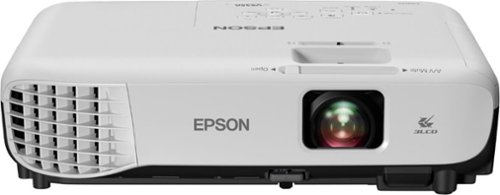
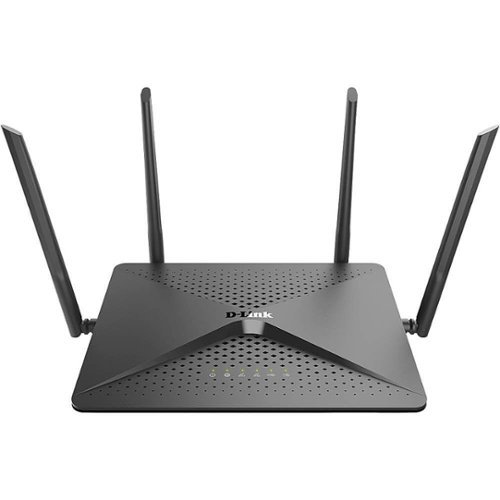

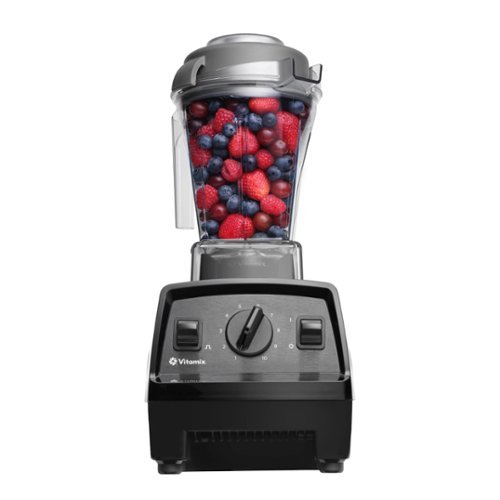
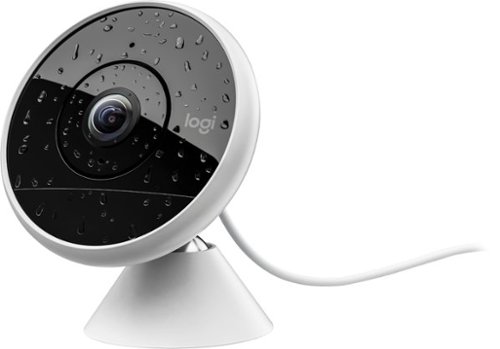
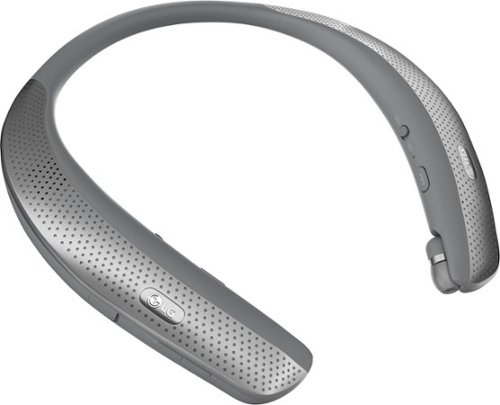
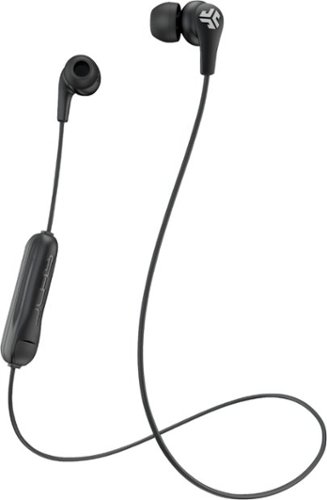
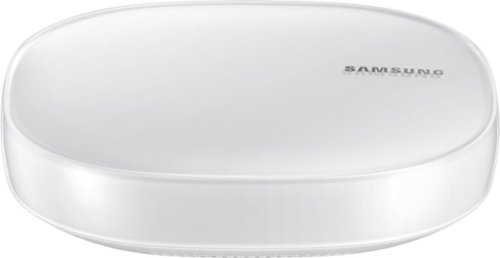
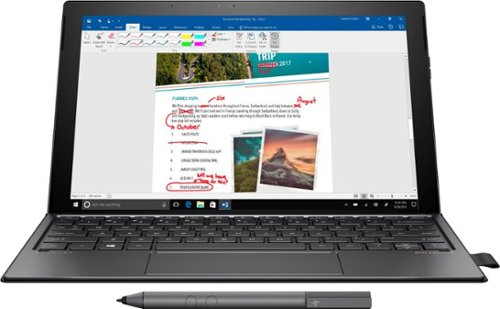
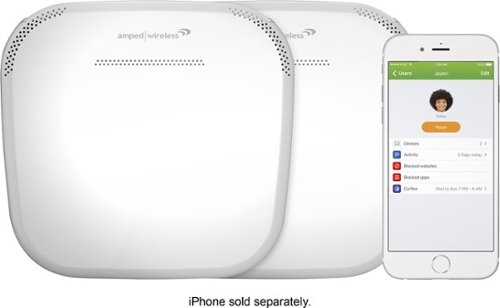

![Purple Rain [Deluxe Expanded Edition] [CD & DVD]](https://pisces.bbystatic.com/prescaled/500/500/image2/BestBuy_US/images/products/7e243777-d208-4d3d-a34c-1c08e51d59bc.jpg)
